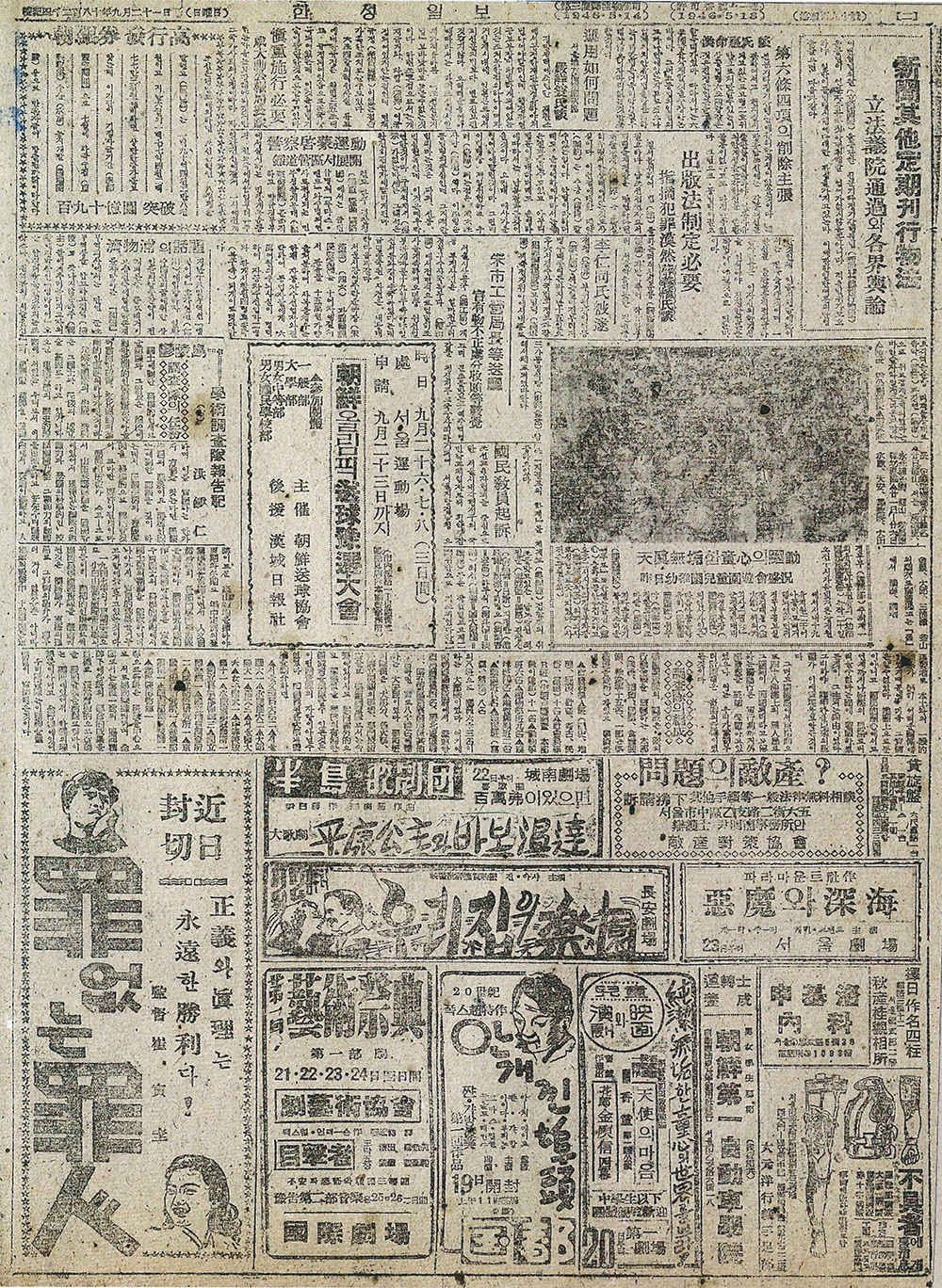Dokdo, the First Victim of Japan’s Aggression Against the Korean Peninsula
02. “Ulleungdo Scientific Expedition Report (1) by Hong Jong-in,” Hanseong Ilbo (September 21, 1947)
Hanseong Ilbo
“Ulleungdo Scientific Expedition Report (1) by Hong Jong-in,” Hanseong Ilbo (September 21, 1947)
[Translation]
“Ulleungdo Scientific Expedition Report (1) by Hong Jong-in”
The Mission of the Expedition Team
A new scientific recognition of national territory and its dissemination is one of the fundamental tasks of education and cultural campaigns together with the critical enlightenment and [propagation] of the national history. The establishment and development of a nation requires the presence of its territory and people. We are presently at the historical step of rebuilding our nation, and one of our means to encourage and practice XXX patriotism is to reinforce the understanding of our territory, the origin and stage of the life of our people. This will help scientifically identify the development factors of our people’s life.
In its campaign of mountain-climbing as a sports activity, the Corean Alpine Club [placed its focus on] the disciplined organizational ability of each expedition, sharpening its scientific mountaineering skills and building its fortitude. The club chooses alpine areas that are remote and difficult to access in our territory for its regular summer and winter alpine projects. This involves organizing a scientific research team that covers different sectors of cultural and natural sciences and verifying XXX practices of research and study. The club intends to scientifically understand our territory in order to inspire love of our land, and further, to reap practical results.
As its summer 1947 project following a scientific research event in the Sobaek Mountains, the club decided to organize and dispatch an expedition of an unprecedented scale to Ulleungdo. This was because Ulleungdo is an isolated island in the East Sea and the already-limited understanding of it deteriorated further since it was so difficult to access, but especially since Ulleungdo was a strategic military point for more than ten years during the war with the Japanese invaders. Above all, Ulleungdo should no longer be an isolated island, out of our maps and beyond the interest of our people. Against this background, the plan, first formulated last fall, finally came to realization.
The visit to Dokdo, an uninhabited island some 48 nautical miles southeast of Ulleungdo, was not announced until it was actually made due to concerns that its XXX might be called into question. In fact, the surprise visit had been part of the expedition plan from the very beginning.
<The Organization of the Expedition Team>
The team primarily comprised two groups: the HQ supervised the overall activities of the team and had 15 members including its captain and others responsible for supervision, [general affairs], provisions and equipment, and transport. Some of them also joined the scientific research group, consisting of the following units: Social Science Unit A (history, geography, economy, social science, archaeology, folklore, and language; tasks carried out by ten members); Social Science Unit B (socioeconomic status survey by 11 members who also belonged to the HQ); Fauna Unit (six); Flora Unit: (nine); Agriculture and Forestry Unit (four); Geology and Mineralogy Unit (two); Medical Unit (eight); Media Unit (photographing & radio by eight).
It was a large team of eight units with 63 members. When the final tally included four investigators from the South Korean Interim Government, Gyeongsangbuk-do Provincial Government employees, and officials from the Fifth Precinct, the total number of people involved in the expedition was about 80. Most of the members of the scientific research group are academics and specialists from universities and government institutions. The expedition can take pride in its recruitment of authorities from all relevant fields, a feat that would be difficult to match both at home and abroad.
The universities and institutions of the participants are as follows: two of them belong to Seoul National University (SNU)’s College of Arts and Sciences; one to SNU’s College of Commerce; two to Suwon College of Agriculture; one to Daegu University’s College of Education; two to a college of pharmacy; six to SNU’s College of Medicine; one to a women’s college of medicine; one to the Suwon Agricultural Research Station; three to the National Science Museum; one to the National Museum; one to the National Folk Museum; two to the Korea Institute of Geoscience & Mineral Resources; one to the National Quarantine Laboratory; and one to the Gyeonggi-do Bacteriological Laboratory. There were also 11 middle school teachers, one radio technician from the Ministry of Communications, and one electrician from the [Ministry of Commerce].
Each unit was to cooperate with and encourage each other under its head, and the entire team was to always work organically under the spirit of teamwork with the goal of achieving comprehensive results for all the units. This was not just a XXX ideal pursued in the organization of the team, but fully exercised by the team in all the activities of the expedition.
[Original Text]















